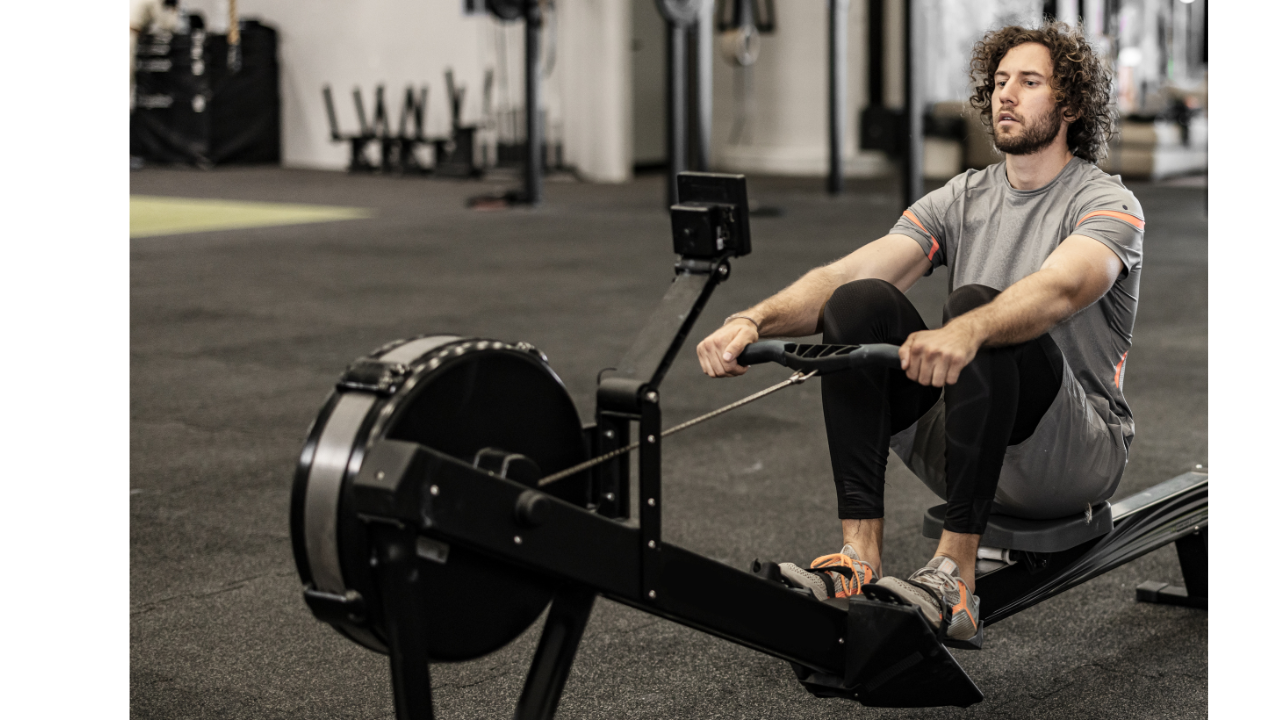Are you looking for a low-impact, full-body exercise that can help you burn calories and build muscle? There is no better option than a rowing machine. In this ultimate guide to rowing machine workouts, we’ll cover the benefits of rowing, proper technique for using a rowing machine, and the specific muscles worked during a rowing workout._
Also, Are you looking for outdoor gym equipment manufacturers in India?
Benefits of Rowing Machine Workouts
Rowing is a great cardiovascular exercise that can provide a low-impact alternative to running or cycling. Here are some of the benefits of incorporating rowing machine workouts into your fitness routine:
- Full-body workout:- Rowing is a full-body workout that activates the muscles in your arms, legs, core, and back. It’s a great option for those who want to tone and strengthen multiple muscle groups at once.
- Low-impact exercise:- Rowing is a low-impact exercise that puts less stress on your joints than running or other high-impact exercises. It’s a great option for those who are recovering from an injury or dealing with chronic joint pain.
- Cardiovascular benefits:- Rowing is a great way to improve your cardiovascular fitness and stamina. It can help you burn calories, increase your heart rate, and improve your overall cardiovascular health.
- Versatility:- Rowing machines come with different resistance levels and programming options, allowing you to customize your workout to your fitness level and goals.
- Mental health benefits:- Rowing may also have mental health benefits, including reducing stress and anxiety levels and improving overall mood.
Technique for Using a Rowing Machine
Using a rowing machine may seem simple, but it is important to use proper technique to avoid injury and get the most out of your workout. Follow the following steps when using a rowing machine:
- Adjust the foot straps:- Start by adjusting the foot straps so they fit snugly around your feet.
- Sit on the seat:- Sit on the seat with your knees bent and your feet resting on the foot pedals.
- Grab the handles:- Hold the handles with an overhand grip, keeping your wrists straight and your arms extended.
- Push back:- Push back with your legs, keeping your arms straight and your back flat.
- Lean back:- Once your legs are fully extended, lean back slightly, bringing the handles toward your chest.
- Pull with your arms:- Pull the handles toward your chest, bending your elbows and bringing your shoulder blades together.
- Reverse the motion:- Reverse the motion, keeping your arms extended, leaning forward and bending your knees.
- Repeat:- Repeat the motion, pushing back with your legs, leaning back slightly and pulling the handles toward your chest.
Muscles Worked During a Rowing Workout
Rowing is a full-body workout that involves multiple muscle groups at once. The specific muscles worked during a rowing workout are as follows:
- Legs:- Rowing primarily targets the muscles of the legs, including the quadriceps, hamstrings, and calves. These muscles are used to push back against the resistance of the rowing machine.
- Core:- Rowing also engages the core muscles, including the abdominal and oblique muscles. These muscles help keep your body stable and maintain proper posture during the rowing motion.
- Back:- The back muscles, including the latissimus dorsi and trapezius, are heavily involved during a rowing workout. These muscles are used to pull the handles toward your chest and maintain proper posture throughout the exercise.
- Arms:- Rowing also engages the arm muscles, including the biceps and forearms. These muscles are used to pull the handles toward your chest and work in conjunction with the back muscles to complete the rowing motion.
- Shoulders:- The shoulders are also involved during a rowing workout, specifically the deltoids. These muscles help stabilize the shoulders and maintain proper posture throughout the exercise.
- Cardiovascular System:- Rowing is a great way to improve your cardiovascular health by increasing your heart rate and oxygen consumption. It improves your stamina and overall cardio-vascular fitness.
Tips for an Effective Rowing Workout
To get the most out of your rowing workout, here are a few tips to keep in mind:
- Start slowly:- If you’re new to rowing, start slowly and gradually increase the intensity and duration of your workout.
- Focus on proper form:- Proper form is vital to an effective rowing workout. Focus on keeping your back straight, your core engaged, and your arms and legs working together.
- Variety your workout:- Vary your rowing workout by adjusting the resistance level, incorporating intervals, or trying different programming options.
- Focus on your breathing:- Proper breathing technique is crucial during a rowing workout. Inhale when pushing back with your legs and exhale when pulling the handles toward your chest.
- Stay hydrated:- Drinking plenty of water before, during, and after your rowing workout is the key to staying hydrated and performing at your best.
Conclusion
Rowing machine workouts are a great way to improve your cardiovascular fitness, strengthen multiple muscle groups, and burn calories. By following proper technique, focusing on proper form, and incorporating a variety of workouts, you can get the most out of your rowing machine workouts.
